BSc STUDENT PROJECTS (LÍF265L)
Parasites in fish: insights into trophic interactions
Applications are invited from interested students for multiple BSc projects in Biology or Molecular Biology for 2025-2026 to work under the supervision of Prof Haseeb Randhawa (Faculty of Life and Environmental Sciences) on a 15 ECTS Project (LÍF265L). The students will each develop a project based on one of the commercial fish species in Icelandic waters, such as: haddock, saithe, halibut, wolffish, plaice, lemon sole or ling. These exciting opportunities will allow prospective students to develop a project focusing on trophic dynamics using diet and parasite communities in commercially exploited marine species. The students will have access to wet lab, molecular lab, and local expertise. The projects will fit within the theme of Fisheries Ecology, Parasitology, or Biodiversity and could form the basis for a larger study (MSc project). Candidates should have interests in Fisheries Ecology, Marine Ecology, Parasitology, Biodiversity or Trophic Ecology. More importantly, candidates should be highly motivated and enthusiastic about this sort of research. The successful applicant may have opportunities to collaborate on other projects running concurrently within my research group. It is anticipated that this study could lead to a manuscript for publication, but this will depend on the findings of the study.
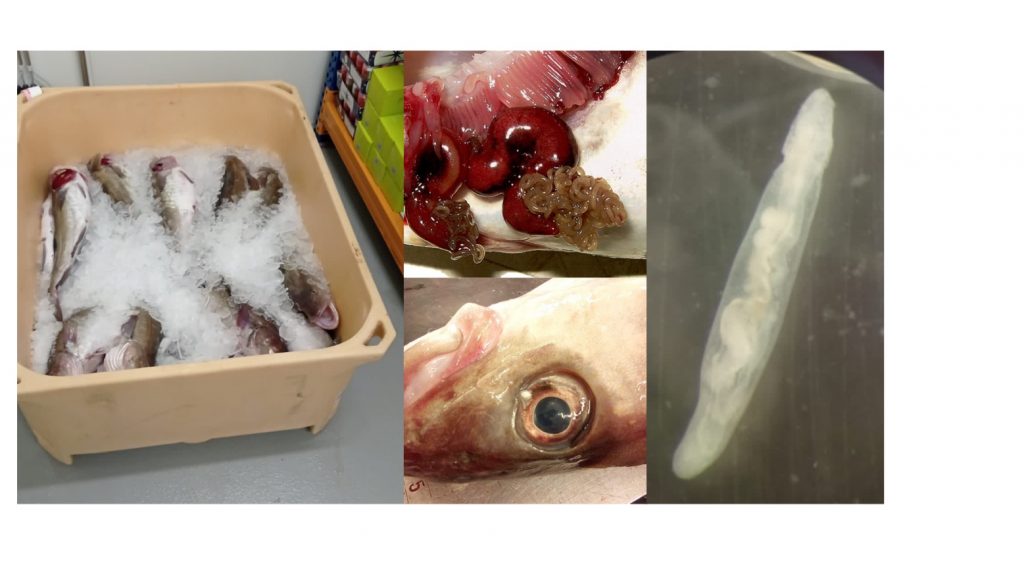
How to apply
Initial enquiries should be made to Prof Haseeb Randhawa, email: hrandhawa@hi.is.
RECRUITING MSc STUDENTS IN AQUATIC BIOLOGY & FISHERIES
Parasites of blue whiting (Micromesistius poutassou)
Applications are invited from suitably qualified students for three MSc student position in Aquatic Biology and Fisheries for 2025-2026 to work under the supervision of Prof Haseeb Randhawa (Faculty of Life and Environmental Sciences). Blue whiting is one of the largest fisheries in the world with an average of about 1.5 million tons caught annually in the Northeast Atlantic. I have samples from 2023 collected from several areas in the northeast Atlantic and I am looking for 1 student to focus on blue whiting caught in Iceland waters, 1 student to focus on blue whiting caught in the Bay of Biscay, and 1 student to focus on blue whiting caught in the Norwegian Sea. The goal of these projects is to study the parasite communities of blue whiting on a regional scale. The students will have access to samples, facilities, and local expertise. Data generated from these student projects will feed into the project: Blue whiting (Micromesistius poutassou) stock structure in the Northeast Atlantic: one or many stocks? The project will fit within the themes of Fisheries Ecology and Marine Parasitology and could form the basis for a larger study (PhD project). Candidates should have interests in Fisheries Ecology or Marine Parasitology. More importantly, candidates should be highly motivated and enthusiastic about research involving dissecting fish. The successful applicant may have opportunities to collaborate on other projects running concurrently within my research group. It is anticipated that this study could lead to a manuscript for publication. Application information is found at the bottom of this page. (Photo credit: Svanhildur Egilsdóttir)

Changes in life history traits and reproductive investment of blue whiting (Micromesistius poutassou)
Applications are invited from suitably qualified students for one MSc student position in Aquatic Biology and Fisheries for 2025-2026 to work under the supervision of Prof Haseeb Randhawa (Faculty of Life and Environmental Sciences) in collaboration with Dr Thassya C dos Santos Schmidt and Dr Anna Heiða Ólafsdóttir (Marine and Freshwater Research Institute, MFRI, Iceland). Blue whiting is distributed from Morocco to Svalbard, but also in can occur in the Mediterranean Sea. The main spawning areas is located west of British Isles, and spawning takes places from February until April. Among the four main pelagic species (capelin, herring, mackerel, and blue whiting), blue whiting landings in Iceland have peaked in 2003 to 501 tons. A recent study showed the effect of condition and parasites on reproductive effort of blue whiting found in the Mediterranean Sea. Our goal is to analyse the reproductive biology – oogenesis, fecundity, and oocyte size on the main blue whiting stock. Researchers from Norway, Faroe Islands, Ireland, the Netherlands, and Spain (IEO) will be contact to contribute by providing ovary samples to be analysed. Also, catch samples collected in Iceland could be used in this study. Additionally historical data will be requested to evaluate possible changes in life history traits, such as condition, growth, and maturity ogive and the environmental effect on them. The project will fit within the theme of Fisheries Biology or Reproductive Biology and could form the basis for a larger study (PhD project). Candidates should have interests in Fisheries Ecology or Marine Ecology. More importantly, candidates should be highly motivated and enthusiastic about this sort of research. The successful applicant may have opportunities to collaborate on other projects running concurrently within my research group. It is anticipated that this study could lead to a manuscript for publication. Application information is found at the bottom of this page. (Photo credit: Svanhildur Egilsdóttir)

Variation in maturity-at-age of Icelandic haddock
Applications are invited from suitably qualified students for one MSc student position in Aquatic Biology and Fisheries for 2025-2026 to work under the supervision of Prof Haseeb Randhawa (Faculty of Life and Environmental Sciences) in collaboration with Dr Ingibjörg Jónsdóttir (Marine and Freshwater Research Institute, MFRI, Iceland). Haddock is one of the main commercial demersal species in Iceland. It is found all around Iceland within a range of different environmental conditions, which may influence population parameters, and hence, the sustainable level of the stock and the commercial catch. One of the main population parameters is maturity-at-age but variability in maturity may be related to various factors, i.e. sexual differences, delayed maturity in higher latitudes and increased depth. Changes in maturity-at-age can also be attributed to fisheries, where higher fishing pressure induce earlier maturation. Large scale geographical variation in maturity-at-age has been noted for Icelandic haddock where haddock north of Iceland mature later than haddock spawning in the south. However, information on finer scale as well as temporal variability is lacking. The goal of the project is to study temporal variations in maturity-at-age for haddock over a 30-year period (1993-2023) in relation to geographic location, depth, temperature and sex. The students will have access to long-term datasets and local expertise. The project will fit within the theme of Fisheries Ecology and could form the basis for a larger study (PhD project). Candidates should have interests in Fisheries Ecology or Marine Ecology. More importantly, candidates should be highly motivated and enthusiastic about this sort of research. The successful applicant may have opportunities to collaborate on other projects running concurrently within my research group. It is anticipated that this study could lead to a manuscript for publication. Application information is found at the bottom of this page. (Photo credit: Svanhildur Egilsdóttir)

Parasites of cod (Gadus morhua) ecotypes
Applications are invited from suitably qualified students for four MSc student position in Aquatic Biology and Fisheries for 2025-2026 to work under the supervision of Prof Haseeb Randhawa (Faculty of Life and Environmental Sciences). Cod is one of the most important fisheries for Iceland and has been the foundation of the Icelandic economy for decades. I have samples from 2022 and 2024 collected from several areas around Iceland from both shallow (<125 m) and deep (>250 m) waters and I am looking for 1 student to focus on cod caught in shallow waters from the north of Iceland, 1 student to focus on cod caught in deep waters from the north of Iceland, 1 student to focus on cod caught in shallow waters from the south of Iceland, and 1 student to focus on cod caught in deep waters from the south of Iceland. The goal of these projects is to study the parasite communities of cod on a regional scale in different ecotypes. The students will have access to samples, facilities, and local expertise. Data generated from these student projects will feed into the project: Study of the potential of parasites as biological tags for discriminating between cod (Gadus morhua) in Icelandic waters. The project will fit within the themes of Fisheries Ecology and Marine Parasitology and could form the basis for a larger study (PhD project). Candidates should have interests in Fisheries Ecology or Marine Parasitology. More importantly, candidates should be highly motivated and enthusiastic about research involving dissecting fish. The successful applicant may have opportunities to collaborate on other projects running concurrently within my research group. It is anticipated that this study could lead to a manuscript for publication. Application information is found at the bottom of this page. (Photo credit: Svanhildur Egilsdóttir)
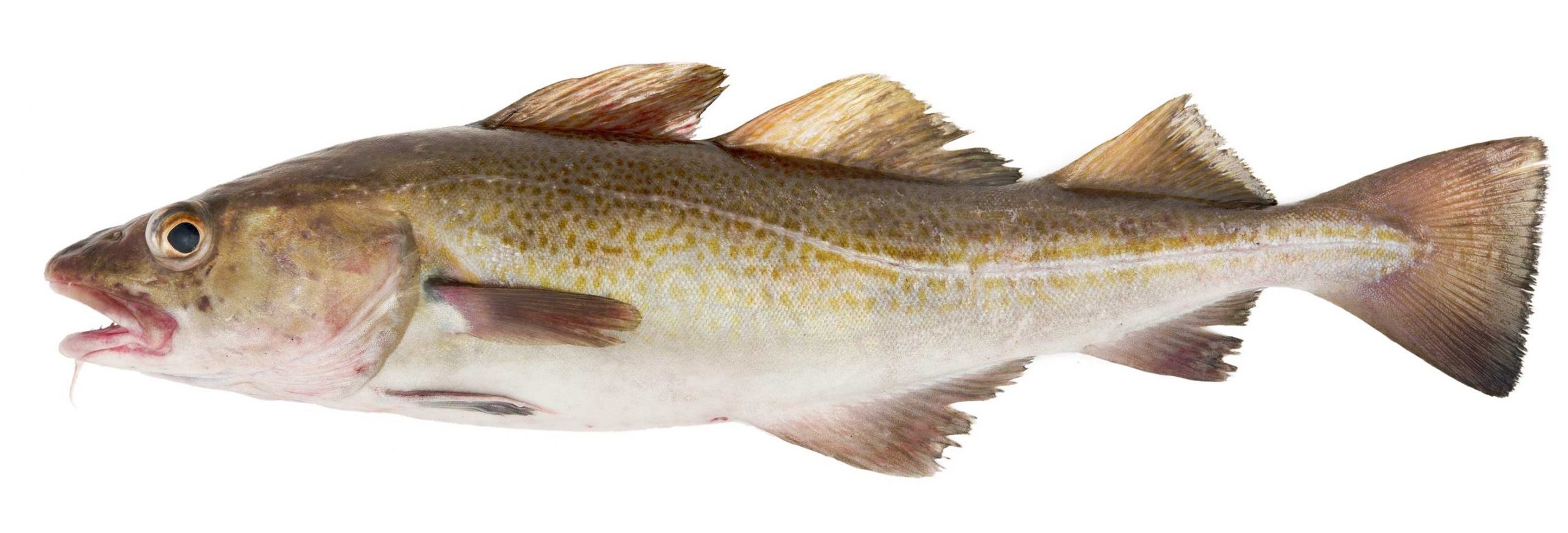
Stock structure of haddock (Melanogrammus aeglefinus)
Applications are invited from suitably qualified students for one MSc student position in Aquatic Biology and Fisheries for 2025-2026 (or 2026-2027) to work under the co-supervision of Prof Haseeb Randhawa (Faculty of Life and Environmental Sciences), Dr Ingibjörg G. Jónsdóttir, and Dr Bjarki Þór Elvarsson (Marine and Freshwater Research Institute). Haddock is one of the main commercial demersal species in Iceland. While it‘s managed as a single stock, recent biological indicators like parasite fauna and life history traits suggest the potential for sub-populations. Otolith shape analysis, a technique that leverages phenotypic differences in fish from distinct environments, has been successfully applied to identify spawning components in various fish species. By examining spatial and temporal variations in haddock otolith shape, this study aims to delve deeper into the stock‘s structure. Otoliths from MFRI archive will be utilized for this study. This project can be tailored to both BS and Masters level: BS project with a focus on spatial variability within a single year or a Master‘s project by exploring both spatial and temporal variability. By gaining a better understanding of haddock stock structure, this research can contribute to more effective fisheries management and conservation efforts. The project will fit within the theme of Fisheries Ecology. Candidates should have interests in Marine Biology, Fisheries Ecology, or Stock Identification. More importantly, candidates should be highly motivated and enthusiastic about research involving dissecting fish. It is anticipated that this study could lead to a manuscript for publication. Application information is found at the bottom of this page.
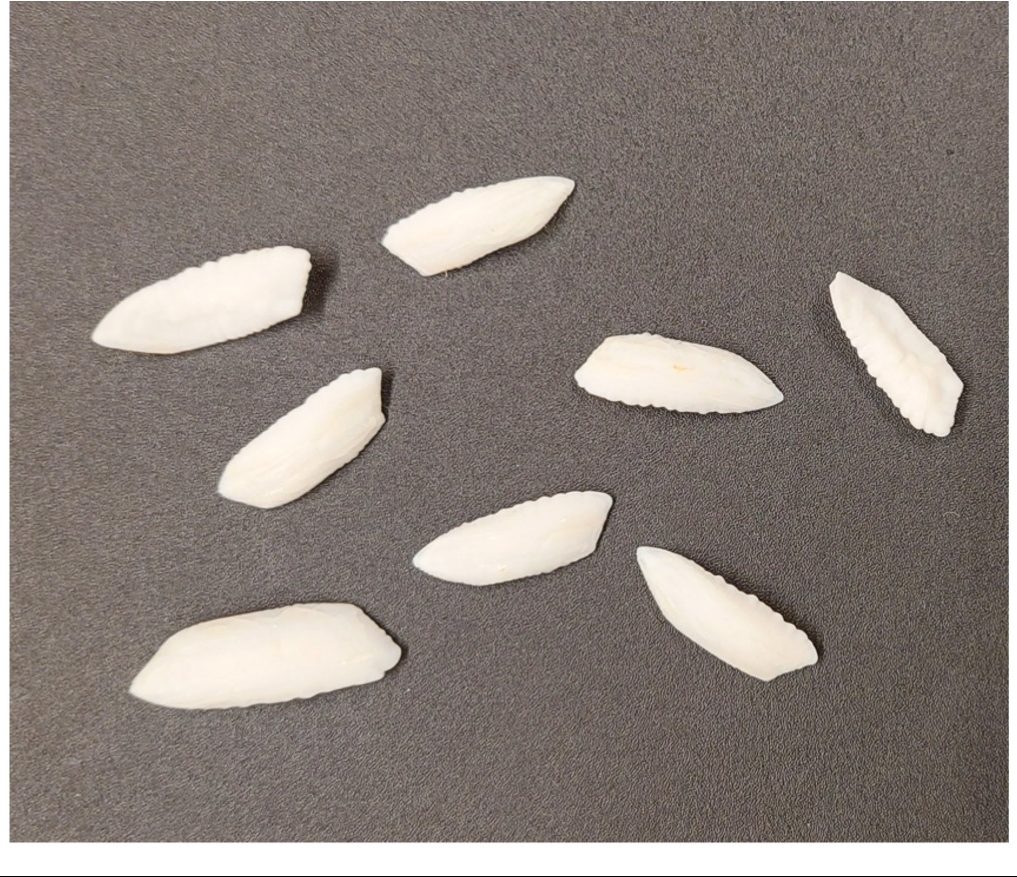
Stock identification of polar cod (Boreogadus saida)
Applications are invited from suitably qualified students for one MSc student position in Aquatic Biology and Fisheries for 2025-2026 (or 2026-2027) to work under the co-supervision of Prof Haseeb Randhawa (Faculty of Life and Environmental Sciences) and Dr Christophe Pampoulie (Marine and Freshwater Research Institute). Polar cod is a keystone species in Arctic ecosystems, yet little is known about its population structure across its distribution. Chris and his collaborators have collected samples from several areas in the Arctic, have obtained a reference genome, and looked into variation across its distribution. Levels of differentiation have only been observed using chromosomal structure between samples from Jan Mayen/Iceland group and those from the Svalbard area. We are looking for 1 student to focus on the parasite communities and otolith shape relative to the chromosomal signature to determine whether these different stock identification methods yield comparative results. The student will work with the same fish samples Chris and his colleagues used for their genomic analyses and perform complete necropsies to recover parasites. The student will have access to samples, facilities, and local expertise. Data generated from this student project will feed into a larger project on polar cod and to the research theme Sustainable management of marine resources: an integrative approach to stock discrimination. The project will fit within the themes of Fisheries Ecology and Marine Parasitology and could form the basis for a larger study (PhD project) involving otolith microchemistry. Candidates should have interests in Marine Biology, Fisheries Ecology, Stock Identification, or Marine Parasitology. More importantly, candidates should be highly motivated and enthusiastic about research involving dissecting fish. The successful applicant may have opportunities to collaborate on other projects running concurrently within our research group. It is anticipated that this study could lead to a manuscript for publication. Application information is found at the bottom of this page. (Photo credit: Svanhildur Egilsdóttir)
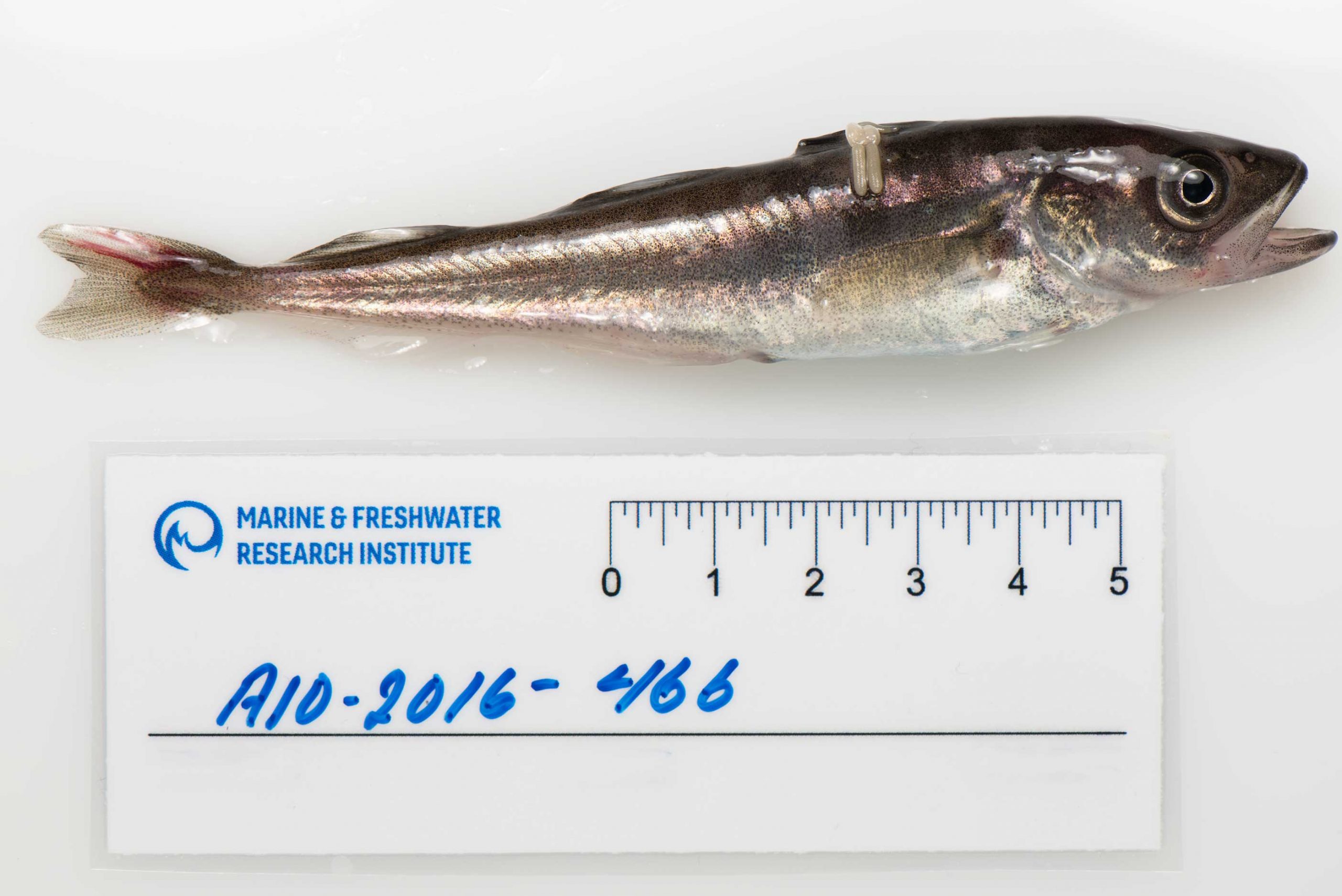
Genetic variation in Atlantic salmon
Applications are invited from suitably qualified students for one or two MSc student positions in Aquatic Biology and Fisheries for 2025-2026 to work under the supervision of Professor Snæbjörn Pálsson (Biology) in collaboration with Jóhannes Sturlaugsson (Laxfiskar). With radseq sequencing we have identified genotypes based on more than 20,000 polymorphic sites of wild salmons from different rivers in Iceland and escapees from open-net aquaculture farms. Currently we are developing a simple PCR-method to identify the escapees, if successful one of the Masters-projects would focus on identifying escapees, both by analysing DNA from fin clips and from environmental water samples collected from salmon rivers, but a further development of the method will also be needed. A second project would focus on analysing existing and new data with respect to relatedness between individuals and population structure within the river Elliðaá and its tributaries. The projects will fit within the theme of Marine Ecology or Fisheries Ecology. Candidates should have interests in Marine or Fisheries Ecology and be motivated and enthusiastic about this research. The successful applicant may have opportunities to collaborate on other projects running concurrently within my research group. Application information is found at the bottom of this page.
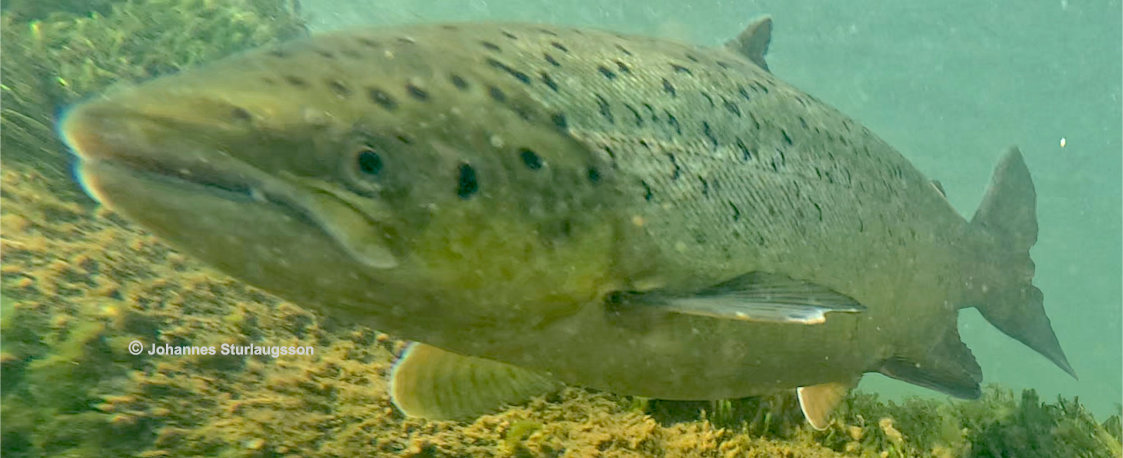
____________________________________________________________________________________________________________________________________
Diet and parasites of porpoises
Applications are invited from suitably qualified students for two MSc student positions in Aquatic Biology and Fisheries for 2025-2026 to work under the primary supervision of Prof Haseeb Randhawa (Faculty of Life and Environmental Sciences) in collaboration with Dr Guðjón Már Sigurðsson (Marine and Freshwater Research Institute, MFRI, Iceland). The focus of the project is to investigate the biology/ecology of porpoises in Icelandic waters. The project would consist of participating in the MFRI gillnet survey in early 2025, help with collecting of porpoises caught as bycatch, and participate in the necropsy of these animals to retrieve biological samples. One of the MSc student will work on a quantitative analysis of the diet of porpoises, whereas the second MSc student will describe the porpoises' parasite fauna. Access to laboratory facilities, training, and local expertise will be provided. The project will fit within the themes of Fisheries Ecology and Trophic Ecology and could form the basis for a larger study (PhD project). Candidates should have interests in Marine Ecology, Fisheries Ecology, or Parasitology. More importantly, candidates should be highly motivated and enthusiastic about this sort of research. The successful applicant may have opportunities to collaborate on other projects running concurrently within the Parasitology and Fisheries Ecology research Group. It is anticipated that this study could lead to a manuscript for publication. Application information is found at the bottom of this page.
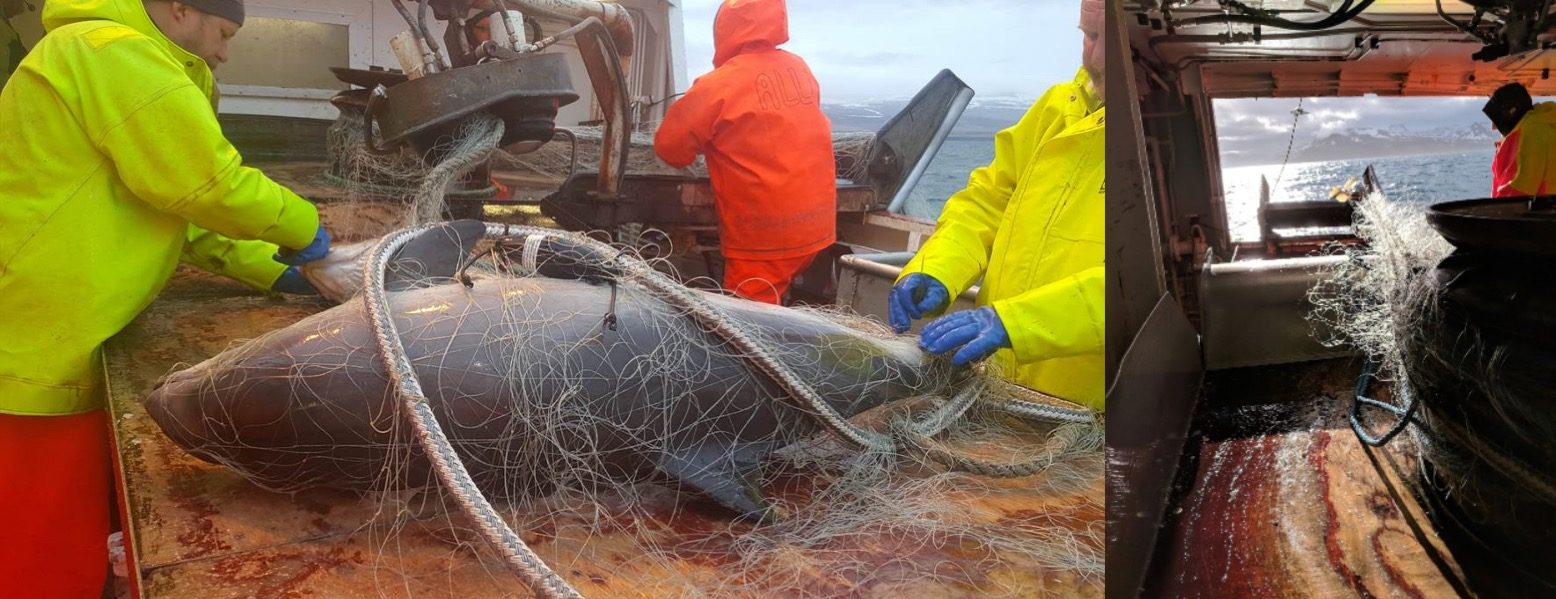
Parasitic diversity in Melanochlamys diomedea (Bergh, 1894) in Iceland:
Investigating native and non-indigenous parasites
Applications are invited from suitably qualified students for one MSc student positions in Aquatic Biology and Fisheries for 2025-2026 to work under the supervision of Haseeb Randhawa (hrandhawa@hi.is), Professor at Háskóli Íslands and expert in parasitology, and Dr. Sindri Gíslason (sindri@natturustofa.is) marine biologist and director of Náttúrustofa Suðvesturlands. The sea slug Melanochlamys diomedea (Bergh, 1894), originally native to the Pacific Ocean, was first recorded in Iceland in 2020, marking its initial appearance in the North Atlantic. As a non-native species now present in Icelandic waters, its ecological impact is still poorly understood, particularly regarding its interactions with local ecosystems and potential parasitic relationships. The primary goal of this project is to document and analyse the parasitic community associated with Melanochlamys diomedea in its new environment. Specifically, we aim to:
- Identify any parasitic organisms present in the sea slug, including protozoans, helminths, and ectoparasites, through a combination of morphological and molecular techniques.
- Determine the origin of the parasites—whether they are native to Icelandic marine ecosystems or were introduced along with the sea slug.
- Assess the potential ecological implications of parasitic infections in Melanochlamys diomedea, particularly whether this non-indigenous host could act as a new host species for local parasites or disrupt existing host-parasite relationships.
- Evaluate the broader ecological impact of this species' introduction, considering how parasitism in Melanochlamys diomedea may affect its survival, reproduction, and interactions with other marine organisms in Icelandic waters.
This study will provide critical insights into the role of invasive species as hosts for native and non-native parasites, which is essential for understanding the dynamics of ecosystem health and species interactions in a changing marine environment. By documenting the parasitic fauna of M. diomedea, the project will contribute valuable data to the fields of parasitology, marine biology, and conservation science, particularly in relation to the effects of species introductions on native marine biodiversity. It is anticipated that this study could lead to a manuscript for publication. Application information is found at the bottom of this page.
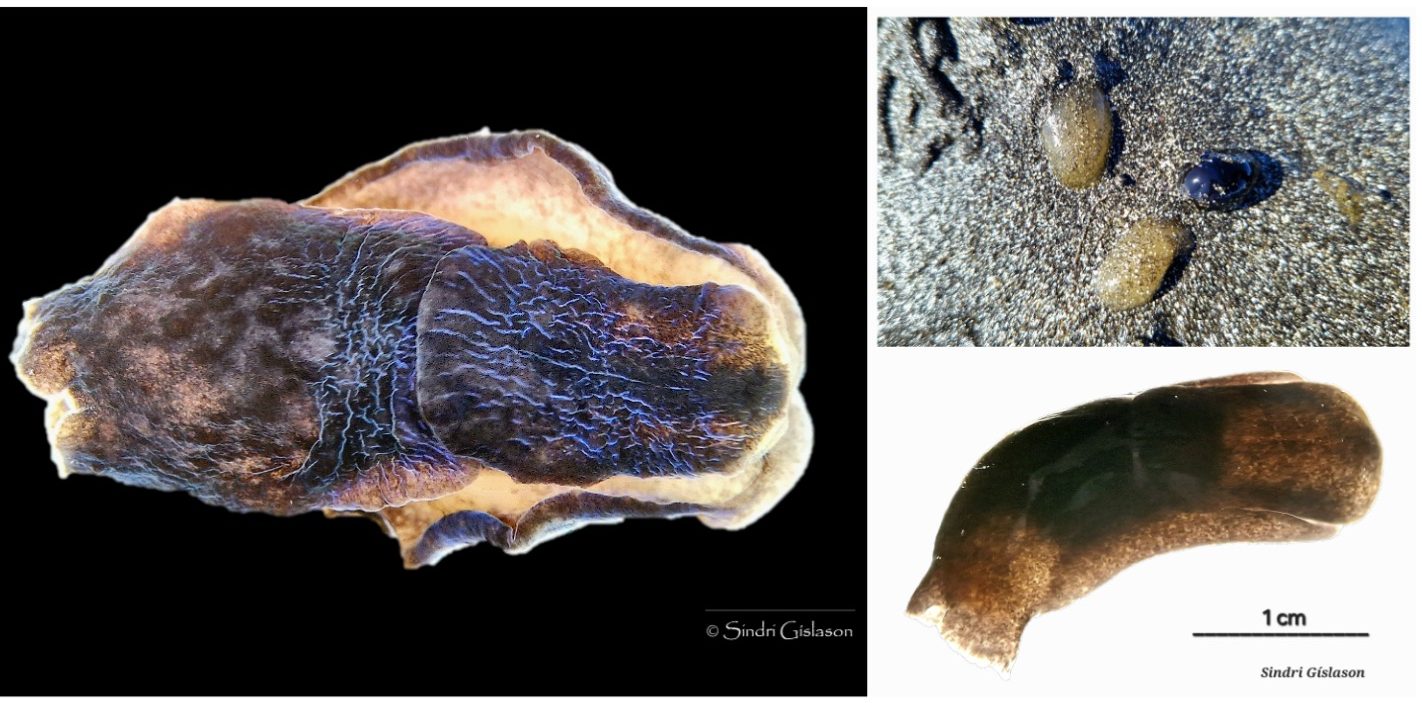
Parasites of lumpfish
The lumpfish, Cyclopterus lumpus, is a scorpaeniform fish of commercial importance to the Icelandic economy. First, it is a prominent aquaculture species exported to Europe and North America to prey on sea lice infecting Atlantic salmon raised in sea cages. Second, it is harvested for its roe that is sold as caviar. Despite the economic importance of the Icelandic lumpfish, its metazoan parasite fauna is poorly known, as research has mostly focused on microorganisms of concern for the export of the species as cleaner fish or nematodes known to infect the roe. The aims of this project are to: (1) characterise the metazoan parasite fauna (ecto- and endo-parasites) of wild-caught Icelandic lumpfish using a combination of morphological and molecular tools (e.g. barcoding via Sanger sequencing); and (2) link the presence of trophically-transmitted parasites to prey items recovered from lumpfish stomach contents. The internship will provide an opportunity to students to develop their fish necropsy, parasite identification, and molecular (e.g. DNA extraction, PCR, purification of PCR products) skills. The project would be carried out under the supervision of Prof Haseeb Randhawa (Faculty of Life and Environmental Sciences) at the University of Iceland. Application information is found at the bottom of this page.
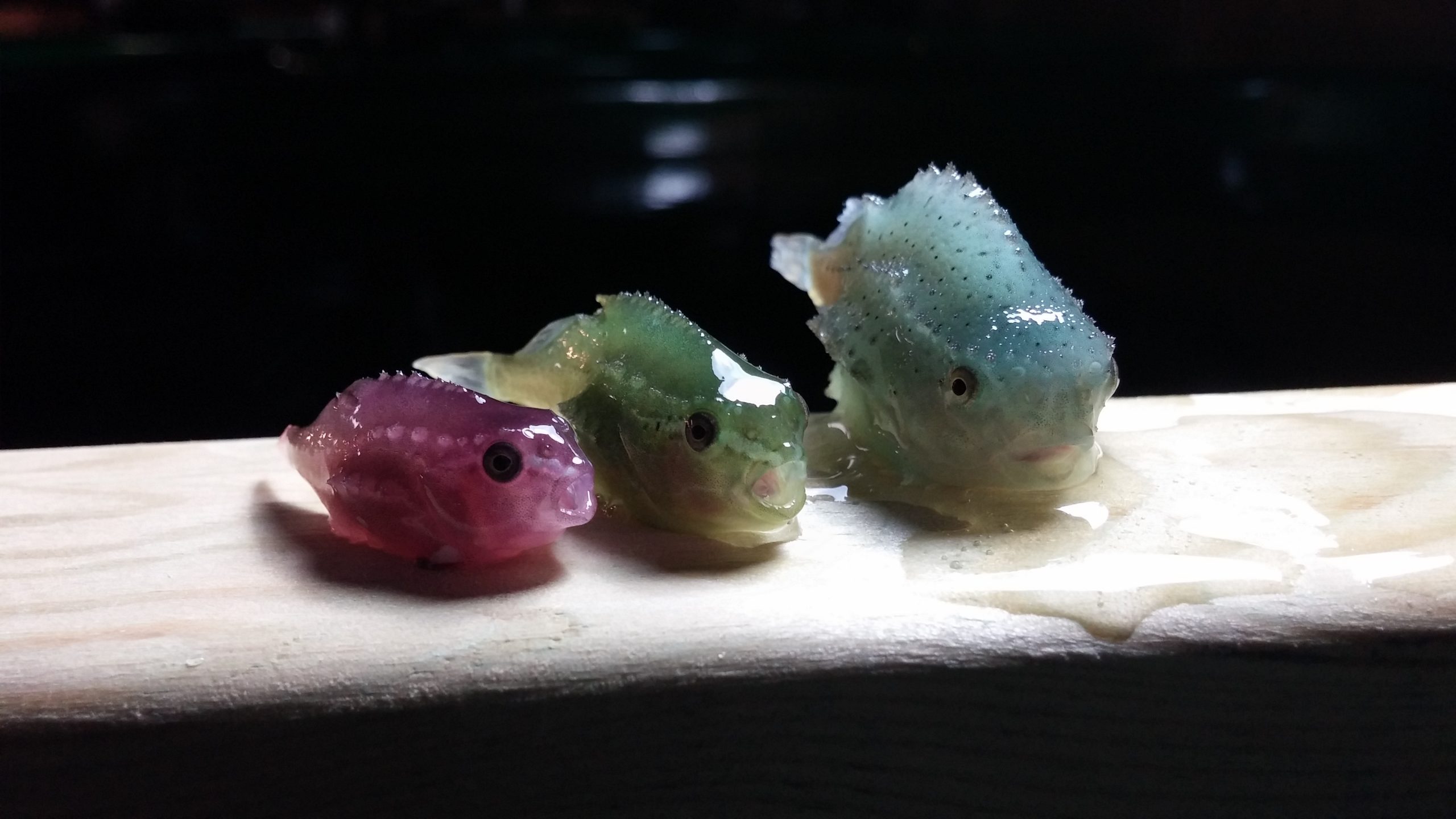
Mapping benthic habitats in Jökuldjúp, W Iceland
Applications are invited from suitably qualified students for one MSc student position in Aquatic Biology and Fisheries for 2025-2026 to work under the supervision of Prof Haseeb Randhawa (Faculty of Life and Environmental Sciences) in collaboration with Steinunn H. Olafsdóttir and Julian M. Burgos (Marine and Freshwater Research Institute, MFRI, Iceland). The main objective of this project is to map benthic habitats in the Jökuldjúp, an underwater trough located on the western Icelandic shelf. This area was visited during two surveys in 2017 and 2019, as part of MFRI's Habitat Mapping programme. Records of epibenthic organisms were obtained along 52 underwater video transects. Other available datasets includes multibeam bathymetry and backscatter maps for the area, high-resolution fishing effort data (from VMS and AIS systems), and maps of near-bottom environmental parameters (temperature, nutrients, current speed, etc.). The work that the student will carry out includes 1) applying multivariate methods to identify the main benthic biotopes in the area, 2) developing predictive habitat models (PHMs) to identify the main environmental factors determining the distribution of these biotopes, and 3) utilizing high-resolution fishing effort data to evaluate if the distribution of the biotopes is influenced by bottom trawling. Candidates should have some exposure to using R for statistical analysis, and preferably some experience using geographic information systems (GIS). It is anticipated that this study could lead to a manuscript for publication. Application information is found at the bottom of this page.
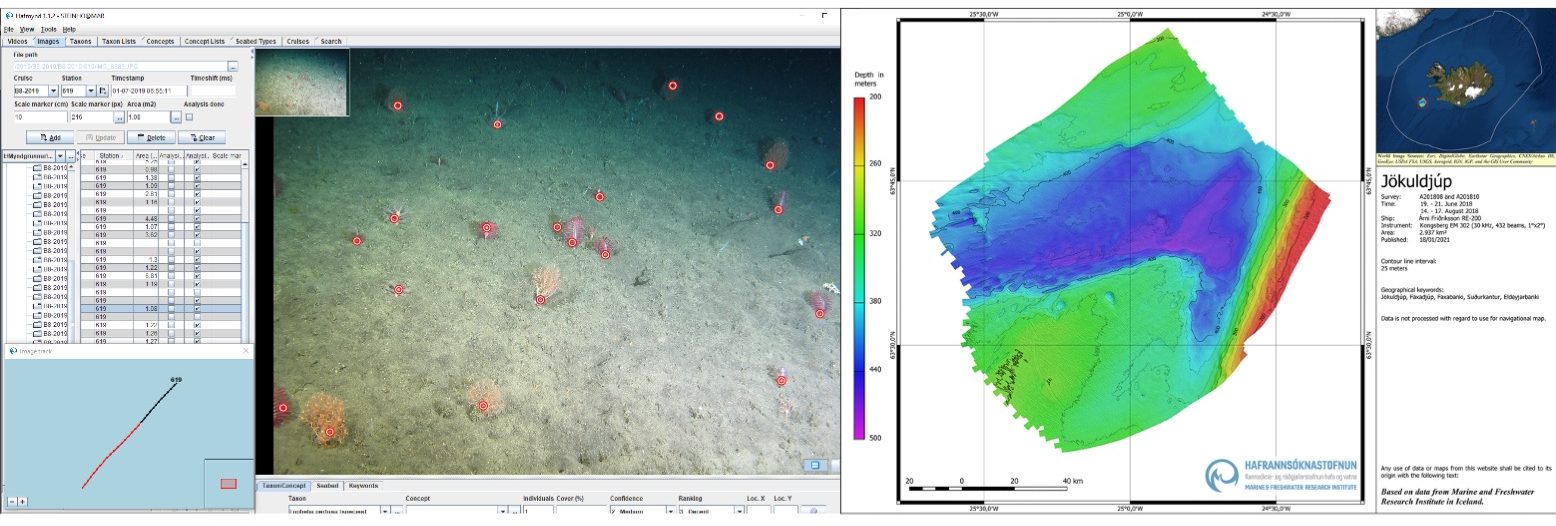
Evaluating the effects of bottom trawling on seapen communities
Applications are invited from suitably qualified students for one MSc student position in Aquatic Biology and Fisheries for 2025-2026 to work under the supervision of Prof Haseeb Randhawa (Faculty of Life and Environmental Sciences) in collaboration with Dr Julian M. Burgos, Dr. Jacob Kasper and Dr. Jonas Jonasson (Marine and Freshwater Research Institute, MFRI, Iceland). The Norway lobster (Nephrops norvegicus) is an important fishery resource targeted on soft bottom areas off southern Iceland. Nephrops spends much of the time within the burrows they build in sandy or muddy sediments. Underwater TV (UWTV) surveys in which burrows are counted provide the necessary data for developing fishery-independent indicators of stock size. The videos from UWTV surveys also provide information on the distribution and abundance of seapens, which in high densities can be considered vulnerable marine ecosystems. The main objective of this project is to utilise data from the UWTV surveys, together with high-resolution fishing effort data, to evaluate the effect of bottom trawling on the distribution and density of seapens. In addition, taking advantage of recent fishery closures, we aim to evaluate the recovery rate of impacted seapen habitats. Candidates should have some exposure to using R for statistical analysis. It is anticipated that this study could lead to a manuscript for publication. Application information is found at the bottom of this page.
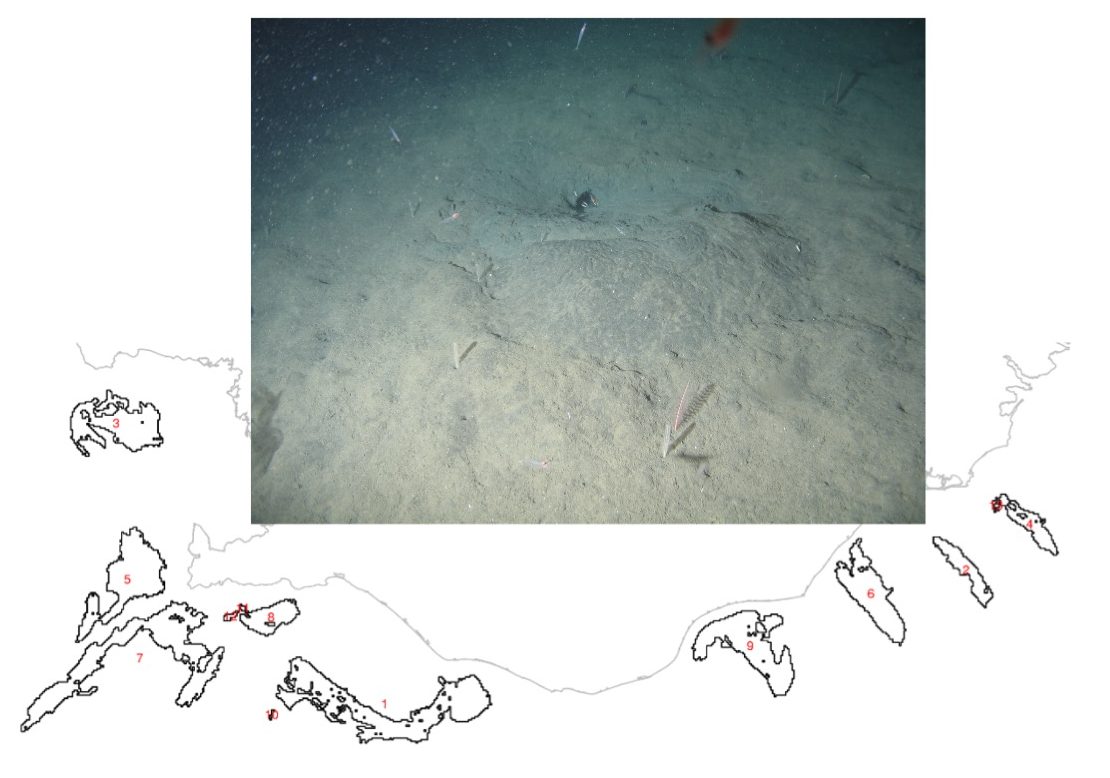
Bycatch and discards of fishes in the lumpsucker fishery in Iceland
Applications are invited from suitably qualified students for a single MSc student position in Aquatic Biology and Fisheries for 2025-2026 to work under the supervision of Prof Haseeb Randhawa (Biology) in collaboration with Dr James Kennedy (Marine and Freshwater Research Institute, MFRI, Isafjörður). Lumpfish are targeted using bottom set gillnets around the coastal areas of Iceland. A significant quantity of other fish species are known to be caught in these gillnets with some of the bycatch being landed while some is discarded. Using landings data, the student will describe the species composition of landed bycatch and how it varies through the season, between areas and between years. Using data from fisheries observers, the student will examine the composition of bycatch and how it compares to the landed catch and estimate the level of discarding. There have several regulatory changes through time to reduce discarding, the effectiveness of these changes can be evaluated by checking if there is significant changes in the species composition of landings coinciding with their implementation. The goals are to: (1) document the species landed in the lumpsucker fishery and if this varies through the season, between years and between areas using landings data; and (2) examine observer data from Fiskistofa to detect if there is significant discarding of particular species and if there have been any significant changes in discarding over time. The project will fit within the theme of Fisheries Ecology. Candidates should have interests in Fisheries or Marine Ecology. More importantly, candidates should be highly motivated and enthusiastic about this sort of research. The successful applicant may have opportunities to collaborate on other projects running concurrently within my research group. Application information is found at the bottom of this page.
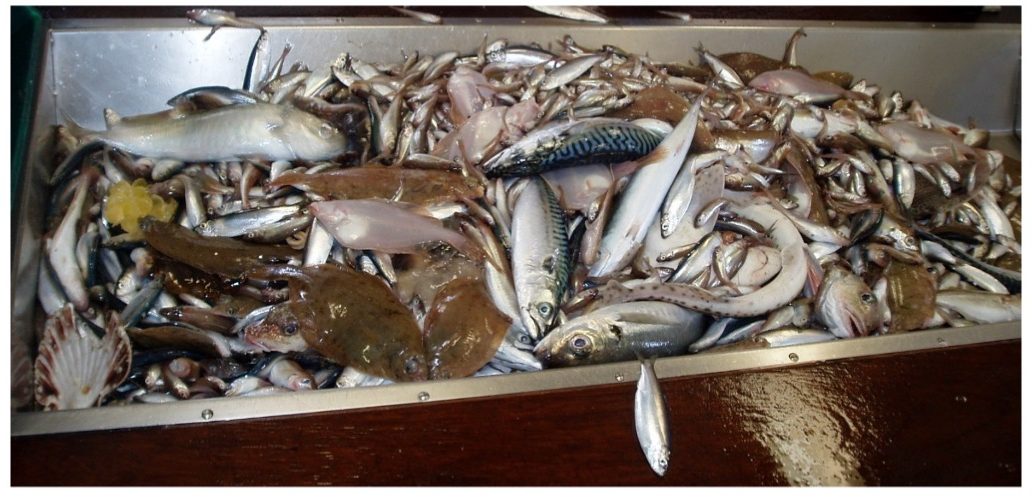
Predator-prey interaction: Lumpfish-jellyfish (the gelatinous food web)
Applications are invited from suitably qualified students for one MSc student position in Aquatic Biology and Fisheries for 2025-2026 to work under the supervision of Prof Haseeb Randhawa (Biology) in collaboration with Dr Guðmundur Óskarsson and Dr James Kennedy (Marine and Freshwater Research Institute, MFRI, Iceland). Lumpfish are known to consume a variety of prey items found in the pelagic zone, with a significant quantity known to be gelatinous zooplankton species. However, the species that are consumed are unknown. In an attempt to examine this previously, stomach contents of lumpfish were preserved in ethanol, but this led to an inability to identify them morphologically. An alternative methodology will involve extracting DNA from the stomach contents and comparing this to DNA libraries of known species (metabarcoding). The main aim of this project is to describe the prey species consumed by lumpfish caught around Iceland during the mackerel and spring demersal surveys. The project will fit within the theme of Trophic Ecology. Candidates should have interests in Marine Ecology. More importantly, candidates should be highly motivated and enthusiastic about this sort of research. The successful applicant may have opportunities to collaborate on other projects running concurrently within my research group. Application information is found at the bottom of this page.
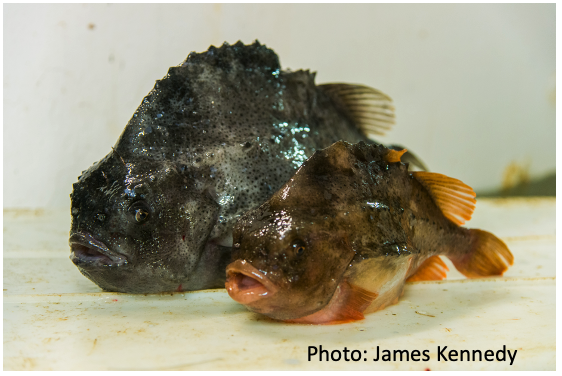
Phenology of phytoplankton bloom and zooplankton: can we test the match-mismatch hypothesis?
Applications are invited from suitably qualified students for one MSc student position in Aquatic Biology and Fisheries for 2025-2026 to work under the supervision of Prof Haseeb Randhawa (Biology) in collaboration with Dr Teresa Silva and Dr Hildur Pétursdóttir (Marine and Freshwater Research Institute, MFRI, Iceland). Can we prove the match-mismatch hypothesis using spatial distribution of onset of the phytoplankton in relation to copepod and krill larval stages? The first feeding stages of copepods and krill larvae feed exclusively on phytoplankton. The idea is to match the areas with phytoplankton concentration and phenology and relate it to the distribution to the first feeding larvae stages of copepods and krill in Icelandic waters. This project will involve working with satellite data on phytoplankton, in situ phytoplankton data, and zooplankton data (copepod and krill larval stages) from surveys. The project will fit within the theme of Marine Ecology or Fisheries Ecology. Candidates should have interests in Marine or Fisheries Ecology. More importantly, candidates should be highly motivated and enthusiastic about this sort of research. The successful applicant may have opportunities to collaborate on other projects running concurrently within my research group. Application information is found at the bottom of this page.

Ichthyophonus sp. outbreak in the Icelandic summer-spawning herring
Applications are invited from suitably qualified students for one MSc student position in Aquatic Biology and Fisheries for 2025-2026 to work under the supervision of Prof Haseeb Randhawa (Biology) in collaboration with Dr Guðmundur Óskarsson, Dr Thassya C dos Santos Schmidt, Sigurvin Bjarnason, and Höskuldur Björnsson (Marine and Freshwater Research Institute, MFRI, Iceland). Ichthyophonus sp. outbreak in the Icelandic summer-spawning herring has been ongoing since 2008. Since 2008, the infection prevalence in the stock has been monitored annually, both from catch and survey samples. Moreover, the severity of the infection of each sampled individual has been recorded on basis of macroscopic inspection of the hearts. The outbreak has been having significant impacts on the herring stock size, but more accurate and in-deep estimations need to be done. This involves literature review and linking the data to previous research made on this outbreak. The main objective is to map the development of the outbreak in the herring stock, quantify the herring mortality rate, and the impacts of the outbreak on the stock size development. The work includes descriptive analyses of the available data, running stock assessment models for verifying the inter-annual and age specific mortality rates, and the impacts that the outbreak have had on the herring stock size. The data include individual estimation on infection severity (stage 0-4) along with traditional recordings (length, weight, age, maturity stage etc). The data are derived from both catch and survey sampling. In addition, there are various data from previous research projects related to this outbreak. The project will fit within the theme of Stock Assessment, Marine Parasitology, Fisheries Ecology or Epidemiology. Candidates should have interests in Parasitology, Fisheries Ecology or Marine Ecology. More importantly, candidates should be highly motivated and enthusiastic about this sort of research. The successful applicant may have opportunities to collaborate on other projects running concurrently within my research group. Application information is found at the bottom of this page.
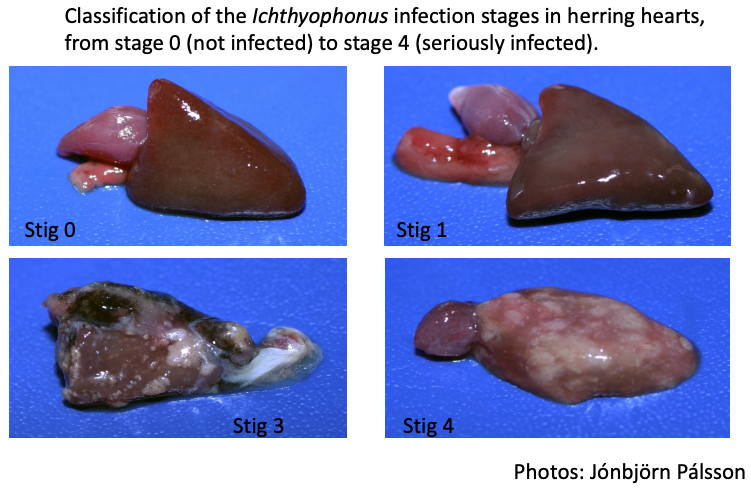
Acoustic observation of pelagic fish and other biota in the water-column
Applications are invited from suitably qualified students for MSc student positions in Aquatic Biology and Fisheries for 2025-2026 to work under the supervision of Prof Haseeb Randhawa (Biology) in collaboration with Dr Birkir Bárðarson, Dr Sigurður Þór Jónsson, and Dr Teresa Silva (Marine and Freshwater Research Institute, MFRI, Iceland). Groundfish surveys have been conducted in March since 1985 and also in the autumn (October) since 1996. The groundfish surveys are using bottom trawling solely to catch demersal fish for stock assessment purposes. Originally, they were operated only by commercial trawlers, but later research vessels have also participated. The research vessels (r/v) are equipped with acoustic echosounders giving opportunities to also collect information from the upper water column. In recent years acoustic data has been recorded from the r/v echosounders while proper holistic scrutinization has not taken place. This leaves an opportunity to map and identify species or functional groups of the upper water column giving new information about their quantities, behaviour and interactions. This can give valuable information about the biology of given species and ecosystem interactions. The challenge of this approach is that ideally, a ground truth biological sampling is needed to support the acoustic measurements e.g. with pelagic trawls and nets, while the only sampling in the groundfish surveys is by bottom trawling. Still, the bottom trawl catch and analysis of stomach contents along with information from surrounding fisheries can be used as indicators of species in the upper water column. Examples of potential research questions include (but are not restricted to): (1) Can acoustic measurements in groundfish surveys give important information for ecosystem-oriented management?; (2) How much capelin is arriving to its spawning grounds in March?; and (3) How significant are diurnal migrations of redfish from the bottom to upper layers and what are its effects on stock assessment based on bottom trawling? The project will fit within the theme of Fisheries Ecology. Candidates should have interests in Fisheries Ecology or Marine Ecology. More importantly, candidates should be highly motivated and enthusiastic about this sort of research. The successful applicant may have opportunities to collaborate on other projects running concurrently within my research group. Application information is found at the bottom of this page.
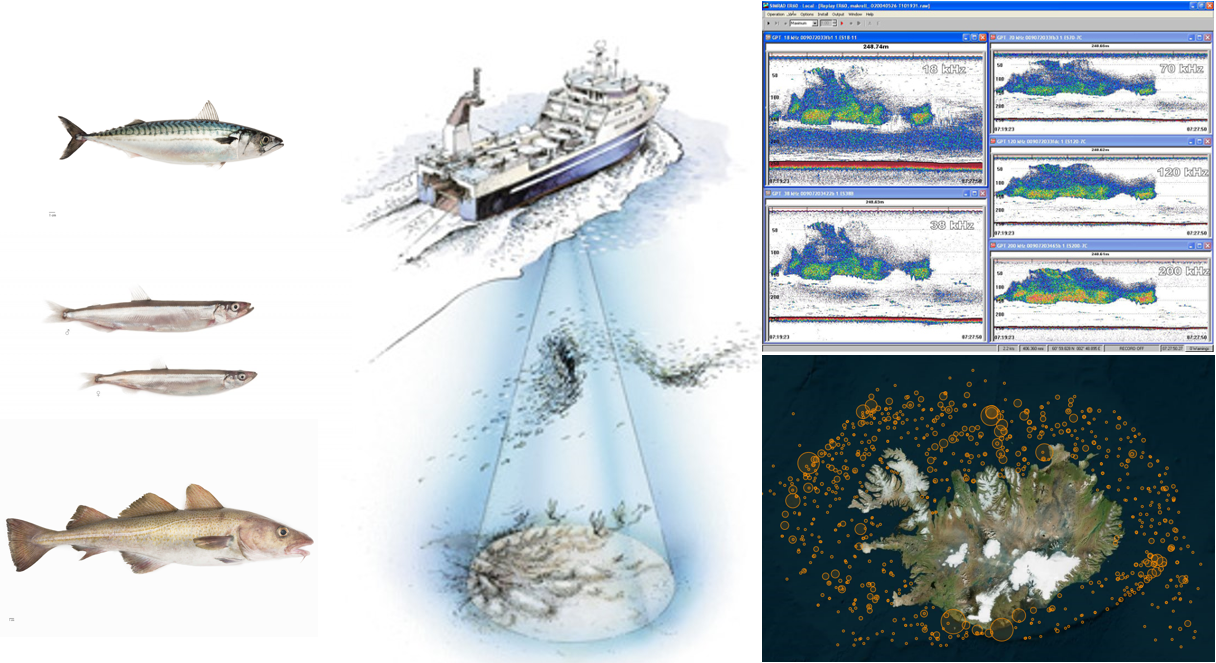
Parasites of fin whale (Balaenoptera physalus)
Applications are invited from suitably qualified students for TWO MSc student position in Aquatic Biology and Fisheries for 2025-2026 to work under the primary supervision of Prof Haseeb Randhawa (Biology) in collaboration with Valérie Chosson (Marine and Freshwater Research Institute, MFRI, Iceland). The MFRI has many unprocessed samples collected from fin whales dating back over two decades. The students will process some of this material to recover and identify parasites using both morphological and molecular methods. The project consists of a descriptive study to gain insights into the parasite fauna and ecology of this large cetacean in Icelandic waters and to establish a baseline catalogue of parasite diversity in fin whales. The student will have access to lab facilities, training, and local expertise on cetacean biology and ecology. The projects will fit within the theme of Marine Ecology and Parasitology. Candidates should have interests in Marine Ecology, Parasitology, or Marine Mammal Ecology. More importantly, candidates should be highly motivated and enthusiastic about this sort of research. The successful applicant may have opportunities to collaborate on other projects running concurrently within my research group. Application information is found at the bottom of this page.
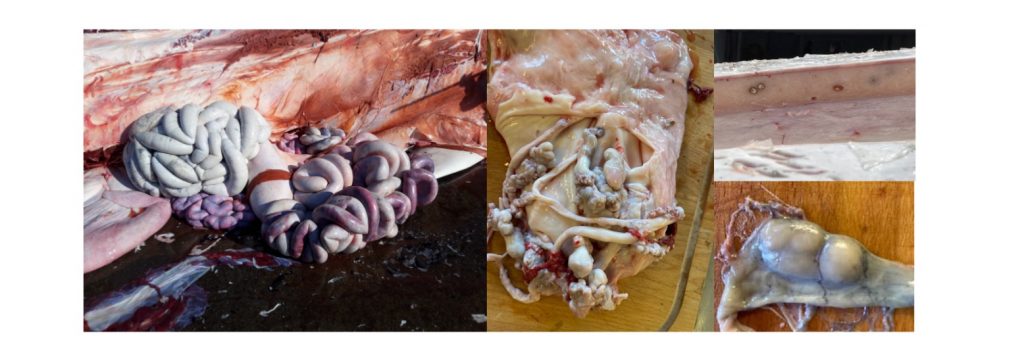
How to apply
Initial enquiries should be made to Professor Haseeb Randhawa, email: hrandhawa@hi.is.
Applicants for MSc projects should send a cover letter stating briefly why they are interested in this project, together with the names, addresses, and e-mail of 2 referees. Candidates should also include a curriculum vitae. These documents should be sent electronically to Professor Haseeb Randhawa, email: hrandhawa@hi.is.
More information about the MSc study programme in Aquatic Biology and Fisheries at HI can be found at: